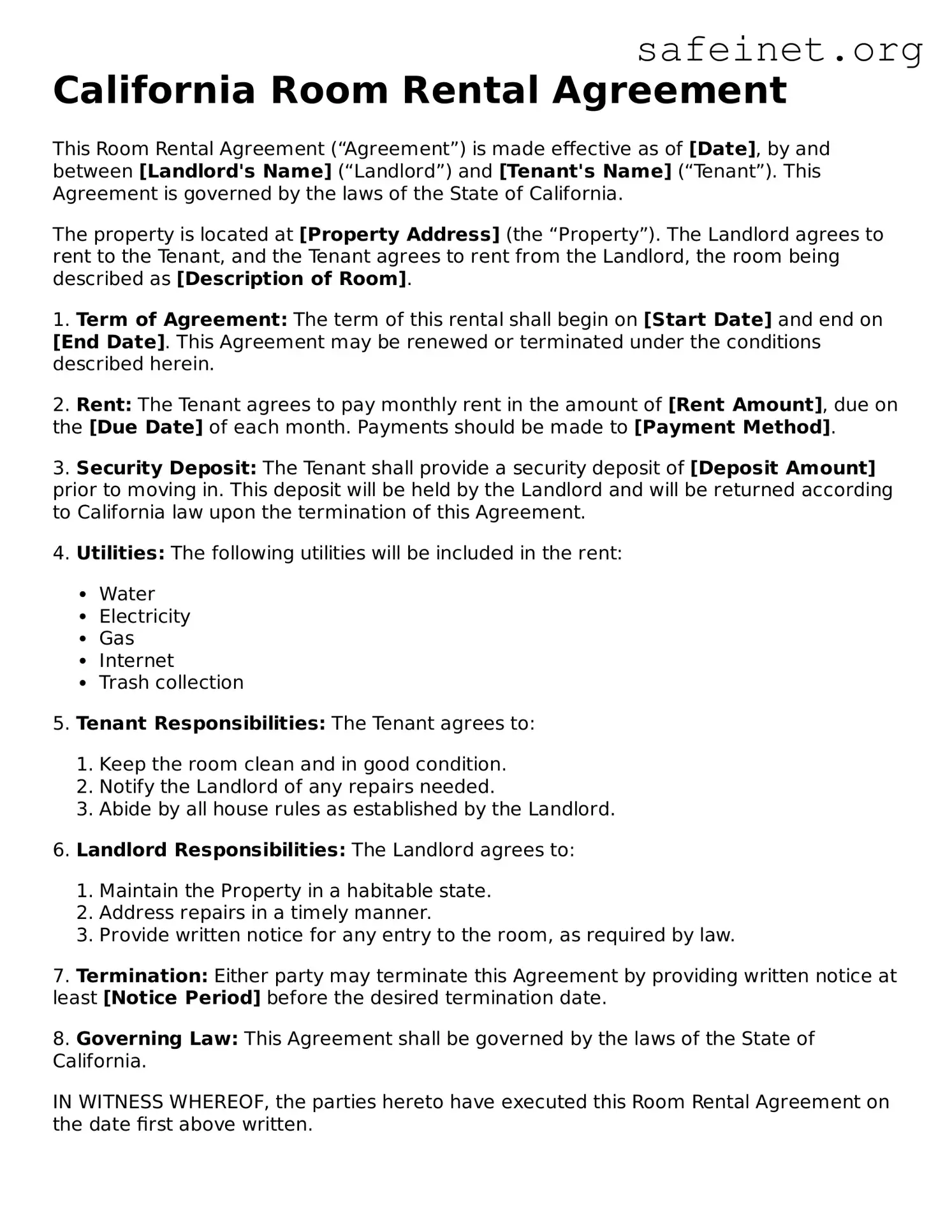What is a California Room Rental Agreement?
A California Room Rental Agreement is a legal document that outlines the terms and conditions under which a room is rented from a landlord or property owner. It serves to protect both the tenant and the landlord by clearly specifying responsibilities. This agreement typically includes details like rent amount, payment due dates, security deposits, duration of the stay, and rules for the property.
What should be included in the Room Rental Agreement?
Key elements of a Room Rental Agreement should address the names of the parties involved, the rental property address, the rental amount, due dates for rent, security deposit requirements, maintenance responsibilities, and any specific rules or guidelines for living in the shared space. It is essential to cover all details to prevent misunderstandings in the future.
Is a California Room Rental Agreement required by law?
While having a Room Rental Agreement is not legally mandated in California, it is highly recommended. An agreement offers legal protection for both parties in case disputes arise. Without a written agreement, it may be challenging to resolve disagreements about terms or conditions.
Can the Room Rental Agreement be modified after it is signed?
Yes, modifications can be made to the Room Rental Agreement after it is signed, but both parties must agree to any changes. It's advisable to document any changes in writing and have both parties sign the amended agreement to maintain clarity and legality.
What happens if the tenant fails to pay rent on time?
If a tenant fails to pay rent on time, the landlord generally has the right to charge late fees as specified in the agreement. Additionally, the landlord may initiate eviction proceedings if the rent remains unpaid for a prolonged period. It’s important for tenants to communicate with their landlords if they face difficulties, as some may offer payment arrangements to avoid escalation.
What should a tenant do if they need to terminate the agreement early?
To terminate the agreement early, tenants should check the terms outlined in the Room Rental Agreement regarding notice periods and penalties. Typically, tenants are required to provide written notice, often 30 days in advance, but this can vary. Communicating openly with the landlord can sometimes facilitate a mutually agreeable exit, possibly without penalties.
Are verbal agreements enforceable in California?
While verbal agreements may be enforceable in California under certain conditions, they are difficult to prove compared to written agreements. Disputes about the terms often arise when details are not documented. To ensure clarity and protection for both parties, a written Room Rental Agreement is strongly recommended.
